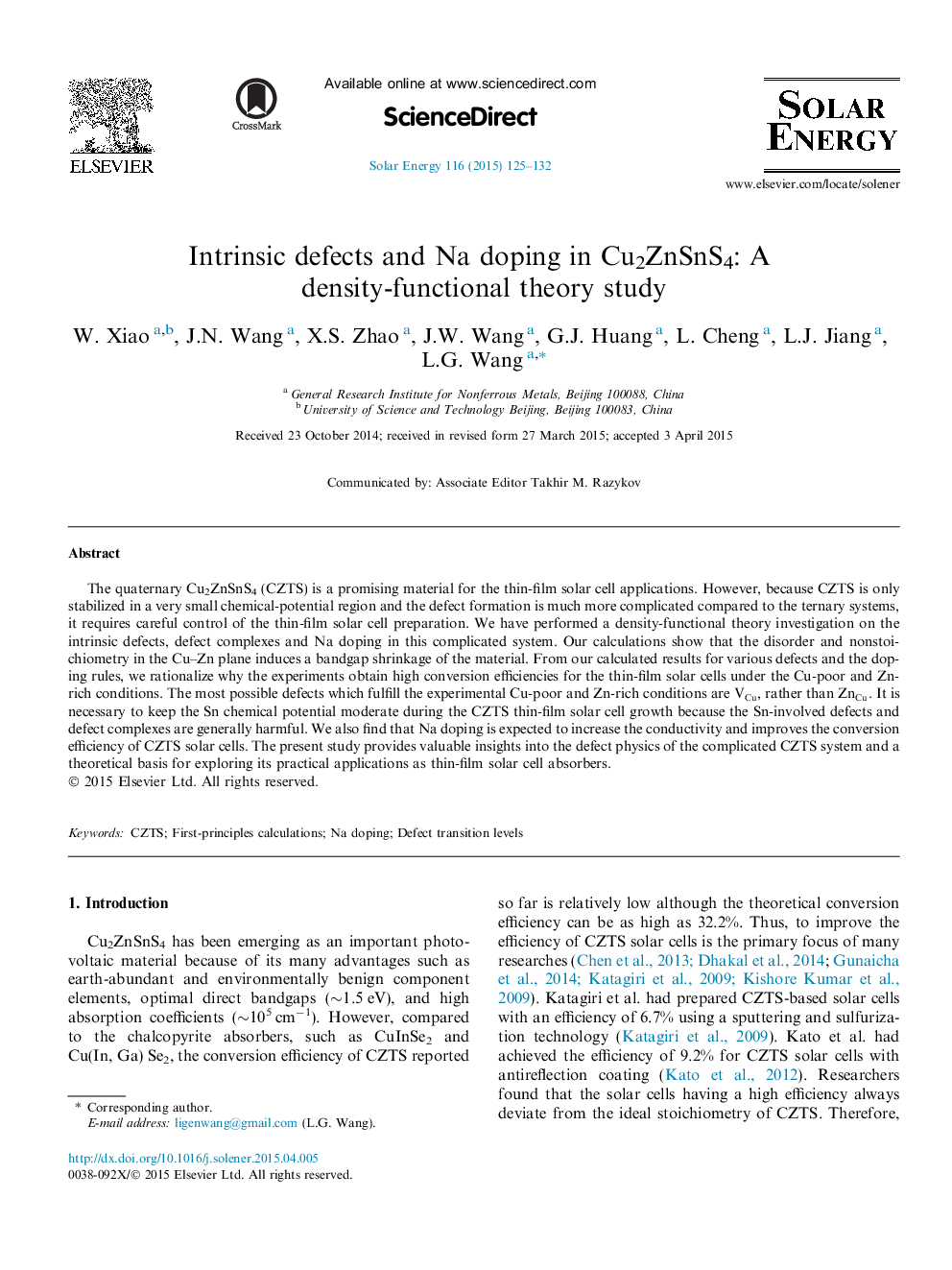| Article ID | Journal | Published Year | Pages | File Type |
|---|---|---|---|---|
| 7937840 | Solar Energy | 2015 | 8 Pages |
Abstract
The quaternary Cu2ZnSnS4 (CZTS) is a promising material for the thin-film solar cell applications. However, because CZTS is only stabilized in a very small chemical-potential region and the defect formation is much more complicated compared to the ternary systems, it requires careful control of the thin-film solar cell preparation. We have performed a density-functional theory investigation on the intrinsic defects, defect complexes and Na doping in this complicated system. Our calculations show that the disorder and nonstoichiometry in the Cu-Zn plane induces a bandgap shrinkage of the material. From our calculated results for various defects and the doping rules, we rationalize why the experiments obtain high conversion efficiencies for the thin-film solar cells under the Cu-poor and Zn-rich conditions. The most possible defects which fulfill the experimental Cu-poor and Zn-rich conditions are VCu, rather than ZnCu. It is necessary to keep the Sn chemical potential moderate during the CZTS thin-film solar cell growth because the Sn-involved defects and defect complexes are generally harmful. We also find that Na doping is expected to increase the conductivity and improves the conversion efficiency of CZTS solar cells. The present study provides valuable insights into the defect physics of the complicated CZTS system and a theoretical basis for exploring its practical applications as thin-film solar cell absorbers.
Related Topics
Physical Sciences and Engineering
Energy
Renewable Energy, Sustainability and the Environment
Authors
W. Xiao, J.N. Wang, X.S. Zhao, J.W. Wang, G.J. Huang, L. Cheng, L.J. Jiang, L.G. Wang,
